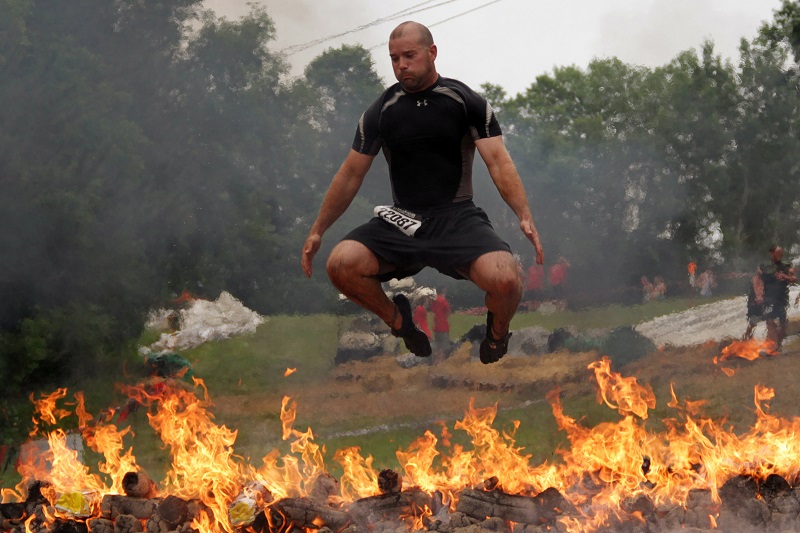
Mathew Mann, 30, leaps over the Warrior Roast obstacle while racing toward the Warrior Dash finish line.
Extreme running and obstacle race events like the ever popular Tough Mudder have taken the country by storm. The idea of pushing the envelope seems to appeal to the survivalist in all of us. But with obstacles like electroshock, fire jumping and freezing water submersion, just to name a few, are these events really safe?
Recent reports may suggest that participating in such events is more harmful to your body than you think. Consider the case of Gerrardstown, West Virginia, for example. This past April, 20 participants were treated for conditions varying from heart attacks to hypothermia at a local hospital after participating in the Tough Mudder. Just a year earlier, 30-year-old Avishek Sengupta died after jumping into a tank of cold water from a 15-foot balance beam.
Tragically, his story is not the only one of loss. As these extreme races gain popularity, more and more stories of disability, injury and even death have begun to surface. The question is why do we still gravitate toward such dangerous events, and how can we keep ourselves safe?
Supporters of obstacle races suggest that proper training can keep participants out of harm’s way. Because of the camradarie of the events, it has been suggested that many athletes show up unprepared and uninformed. In one report by Fox News, Michael Silverman, a physical therapist at the Hospital for Special Surgery (HSS) in New York City, said he believes people can avoid problems by preparing for long distance running and building up overall body strength. With a course that is 10 to 12 miles in length, it does make sense that such training would be beneficial.
“I am definitely pro doing stuff like this,” Silverman said, “but you have to do it within reason and train. Don’t just go out and do it.”
But a new study published in the journal Annals of Emergency Medicine, brings in to question the truth of these statements. The study lays out five different cases of people injured in one such event in Pennsylvania. Unlike other running events, the authors call into question one’s ability to train for “jumping off a nine-foot height or running though a field of electrical wires (while the participant is wet and hot).”
The truth of the matter is that those who decide to participate are taking a risk, which is made blatantly obvious when they are asked to sign a waiver before the event begins. Tough Mudder COO Don Baxter stated in a report to ABC after Sengupta’s death that, “We worked through with our safety protocols. We’re very confident with what we had in place and we’re always improving.”
Ultimately, it is up to each person to decide if the risk is worth the reward. Lead study author Dr. Marna Rayl Greenberg sums it up plainly, “The 1.5 million people who are predicted to enter obstacle races like this in the next year should be well aware of the risks they are taking.”
Image courtesy Wikimedia Commons User Slick-o-bot, United States Marine Corps
 Your Privacy Choices
Your Privacy Choices
 The
The